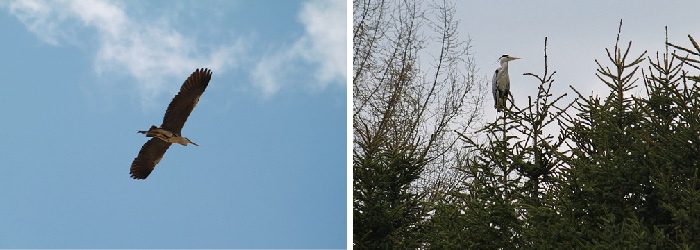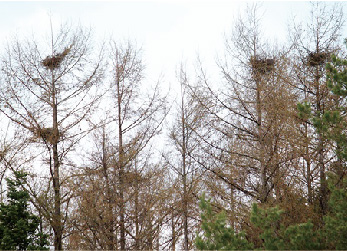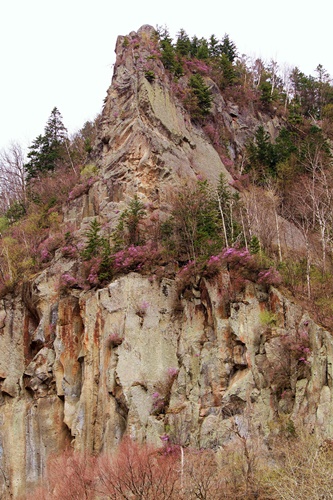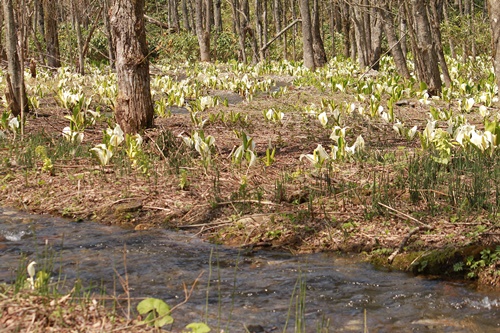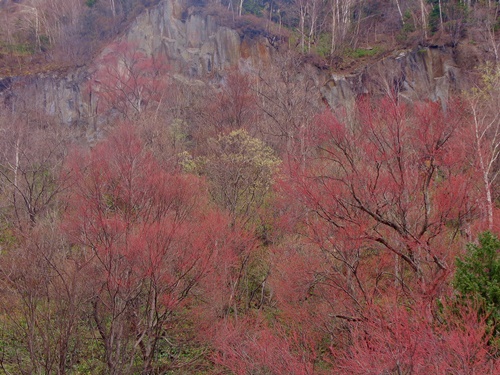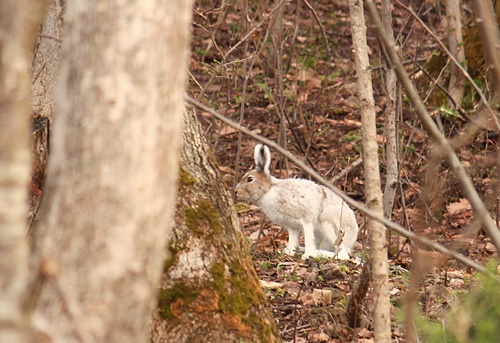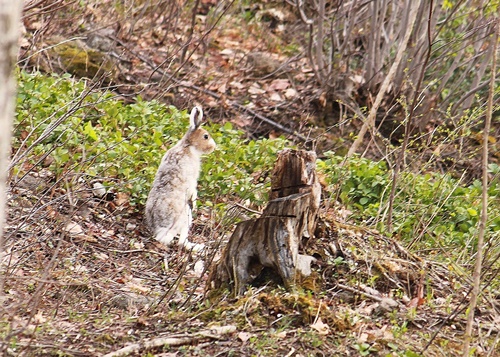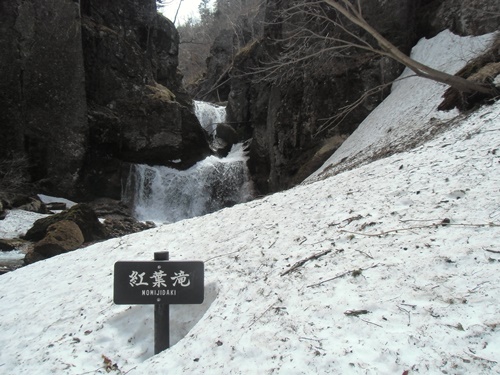Today I found Ardea cinerea in a breeding colony.
Their arrival here was first observed at the end of March. When I happened to pass by the same place today, I saw about 10 birds incubating eggs.
When they first arrived, their number was so great that even local residents came by to watch.
At that time, I could not have imagined that they would choose to breed in this place with so many people and cars going by.
In the case of Ardea cinerea, the male gathers materials to build a nest, while the female puts them together into a dish-shaped structure on tree limbs. After that, the male and female take turns incubating their eggs. The fledglings leave the nest about two months later.
However, crows and black kites were circling overhead. And there is a construction site right next to the colony!
I do hope the chicks grow up safely.
But why in the world did their parents build their colony in such a dangerous place?
Photos: A Ardea cinerea colony May 10
Their arrival here was first observed at the end of March. When I happened to pass by the same place today, I saw about 10 birds incubating eggs.
When they first arrived, their number was so great that even local residents came by to watch.
At that time, I could not have imagined that they would choose to breed in this place with so many people and cars going by.
In the case of Ardea cinerea, the male gathers materials to build a nest, while the female puts them together into a dish-shaped structure on tree limbs. After that, the male and female take turns incubating their eggs. The fledglings leave the nest about two months later.
However, crows and black kites were circling overhead. And there is a construction site right next to the colony!
I do hope the chicks grow up safely.
But why in the world did their parents build their colony in such a dangerous place?
Photos: A Ardea cinerea colony May 10
